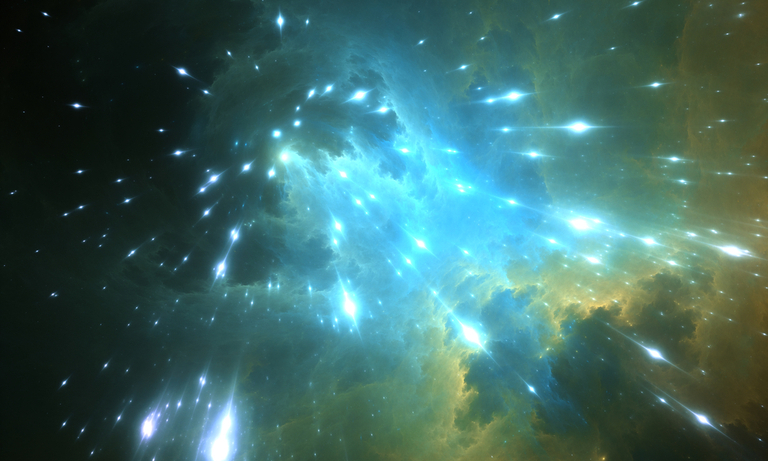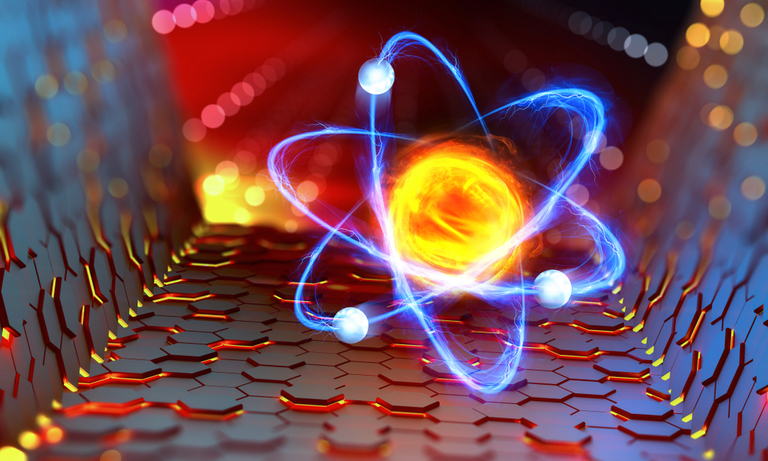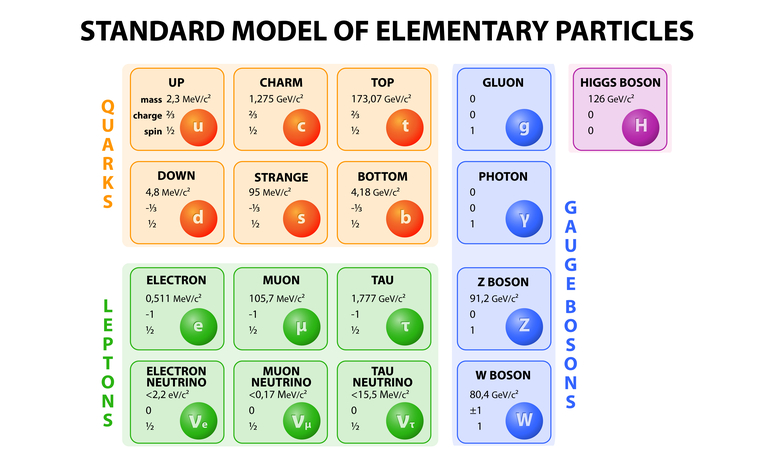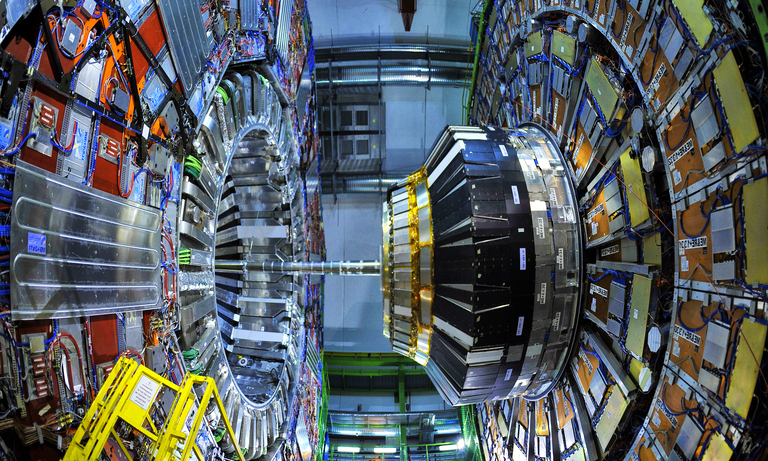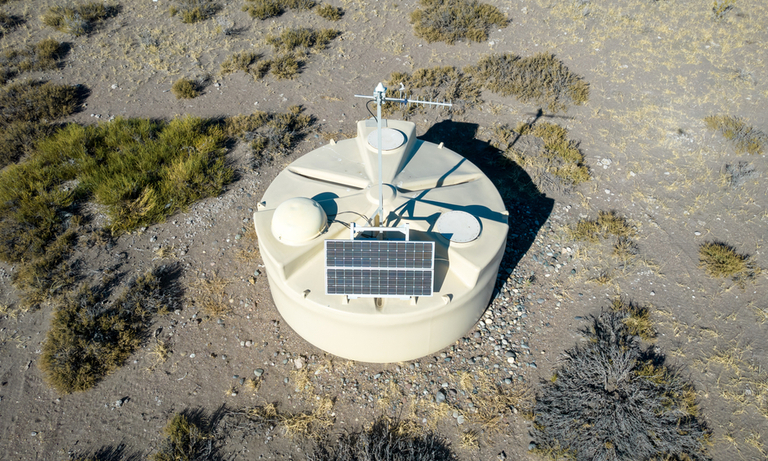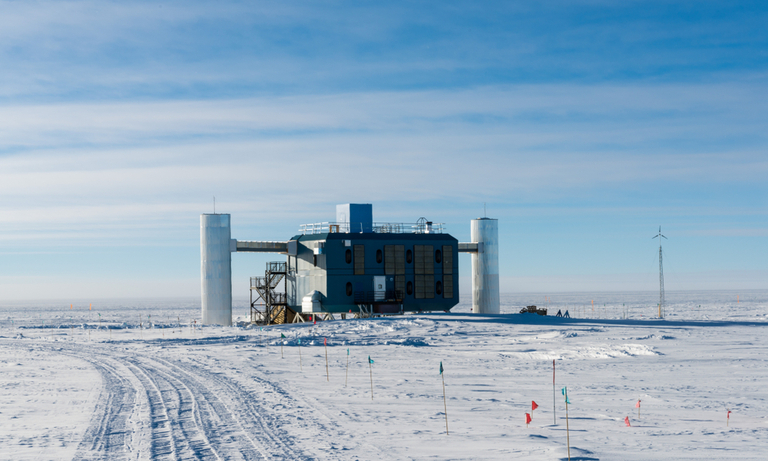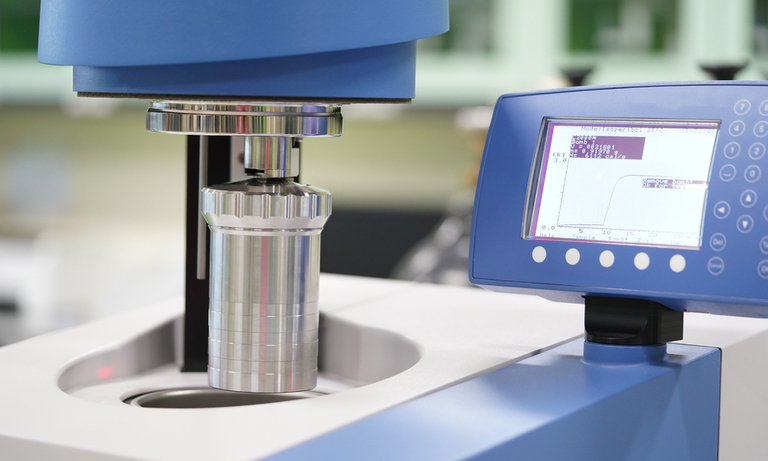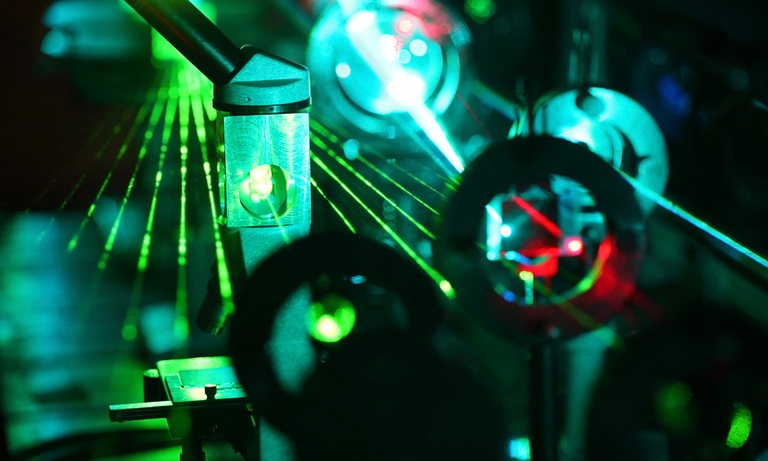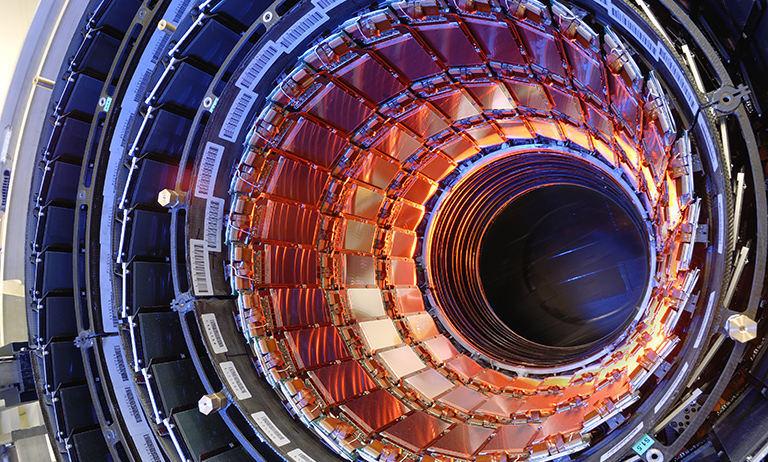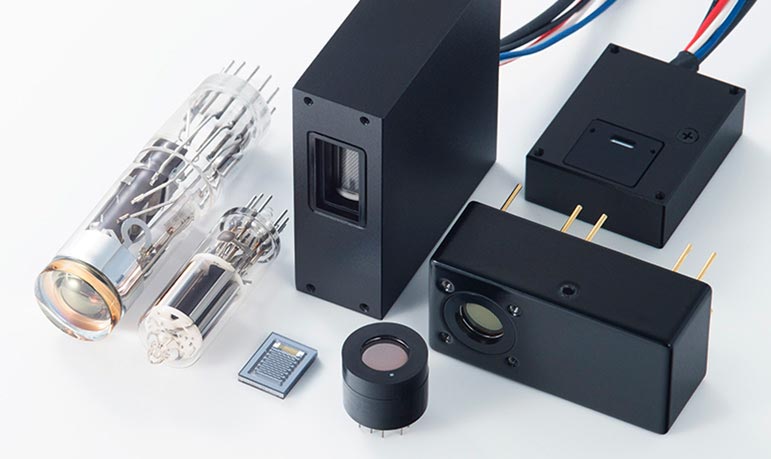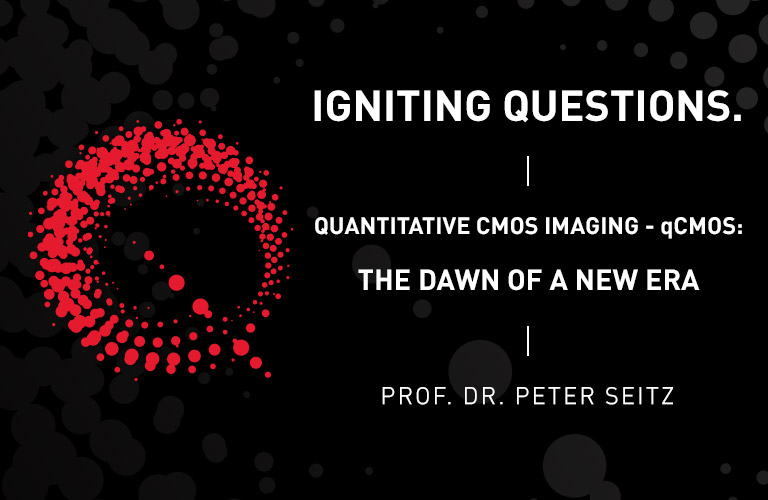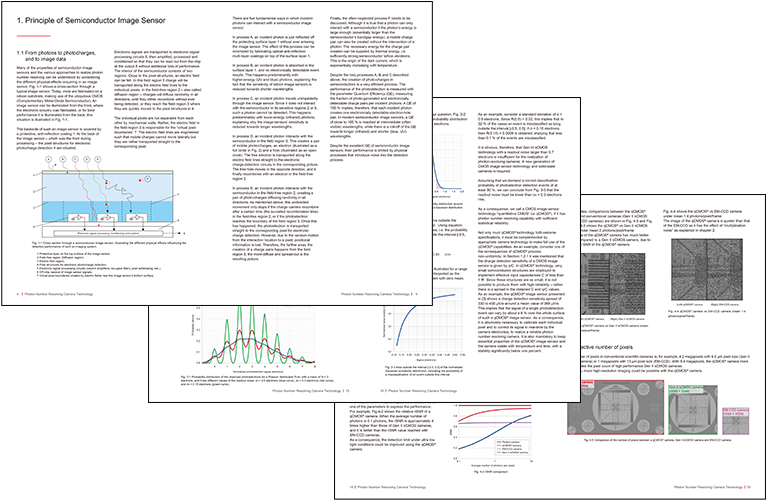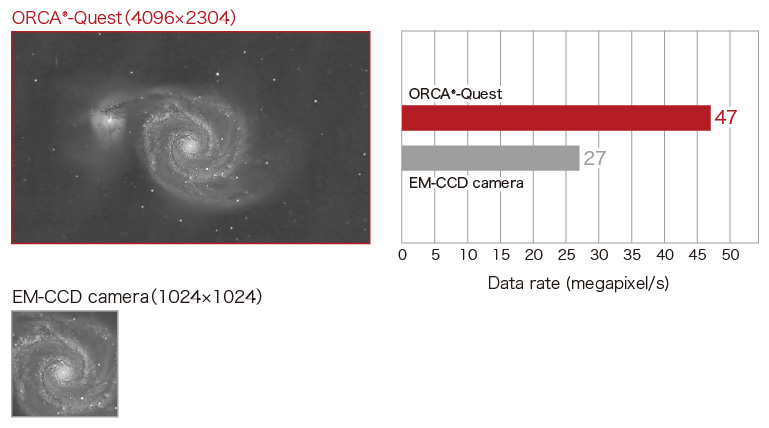Home
Products
Physics Research Field
Type of Experiment
Detector Type
Behind the Science
Tech in a Nutshell
United Kingdom (EN)
Select your region or country.
ORCA-Quest qCMOS camera
C15550-20UP
Groundbreaking in concept and unprecedented in performance.
Since the 1980s, Hamamatsu Photonics has continued to develop high-sensitivity, low-noise cameras using its unique camera design technology and has always contributed to the development of cutting-edge scientific and technological research. Now, we are proud to release the ORCA-Quest with ultimate performance. The C15550-20UP is the world's first camera to incorporate the qCMOS image sensor and to be able to resolve the number of photoelectrons using a newly developed dedicated technology. The camera achieves the ultimate in quantitative imaging.
News about ORCA-Quest
ORCA-Quest qCMOS Camera Named SPIE Prism Awards 2022 Finalist
ORCA-Quest Camera wins the Innovation Award 2022, Biophotonics & Medical Engineering Category
Webinar
We are at the dawn of a new era in CMOS and scientific imaging technology. To fully appreciate why the release of our new ORCA-Quest quantitative CMOS (qCMOS) camera with photon-number resolving technology is an engineering feat that can enable new paths of discovery in biology, physics, astronomy and quantum research, we invite you to watch our launch-day webinar by Dr. Peter Seitz. Dr. Seitz will briefly review the history of semiconductor image sensors and the principles of sensor design and show how applying the principles of photon and camera noise combined with advances in semi-conductor manufacturing culminated in the world’s first qCMOS technology.
Laurin Publishing Company, Inc. are producers and owners of the recording from May 19, 2021.
White paper
The evolution of imaging technology is directly linked to new scientific achievements. Scientific imaging has moved many experiments from relying on subjective recording into objectively documentable, repeatable, and quantifiable methods. Demanding and extremely valuable techniques such as single-molecule-based methods would not be possible without appropriate image sensors. The novel quantitative CMOS (qCMOS) technology finally reaches the physical limit: reliable quantification of photon numbers within each pixel, eliminating the influence of technology on the “triangle of frustration” (resolution, sensitivity, speed). This white paper discusses the new image sensor technology that is at the heart of the qCMOS camera. Topics include the semiconductor image sensor, the state of the art approaches to quantitative semiconductor image sensors, The qCMOS image sensor, and the challenges for photon number resolving.
Find detailed information in our White Paper below.
Four key features
1. Extreme low-noise performance
In order to detect weak light with high signal-to-noise, ORCA-Quest has been designed and optimized to every aspect of the sensor from its structure to its electronics. Not only the camera development but also the custom sensor development has been done with latest CMOS technology, an extremely low noise performance of 0.27 electrons has been achieved.
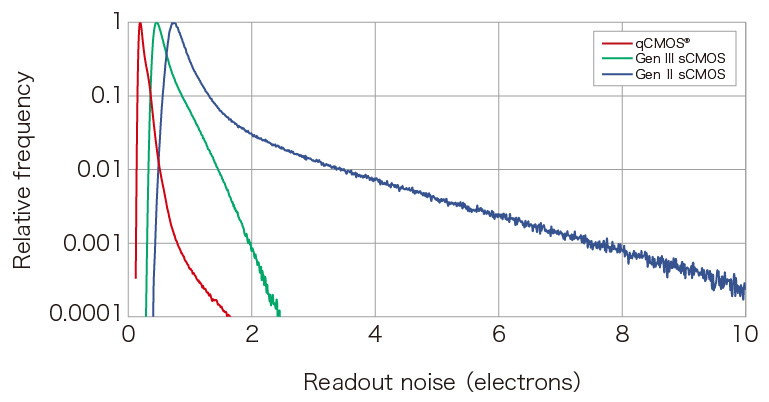
2. Realization of photon number resolving (PNR) output
Light is a collection of many photons. Photons are converted into electrons on the sensor, and these electrons are called photoelectrons. “Photon number resolving*” is a method of accurately measuring light by counting photoelectrons. In order to count these photoelectrons, camera noise must be sufficiently smaller than the amount of photoelectron signal. Conventional sCMOS cameras achieve a small readout noise, but still larger than photoelectron signal, making it difficult to count photoelectrons. Using advanced camera technology, the ORCA-Quest counts photoelectrons and delivers an ultra-low readout noise of 0.27 electrons rms (@Ultra quiet scan), stability over temperature and time, individual calibration and real-time correction of each pixel value.
* Photon number resolving is unique and quite different from photon counting (More precisely the method resolves the number of photoelectrons. However, since single photon counting instead of single photoelectron counting has been used for a comparable method in this field, we will use the term “photon number resolving”).
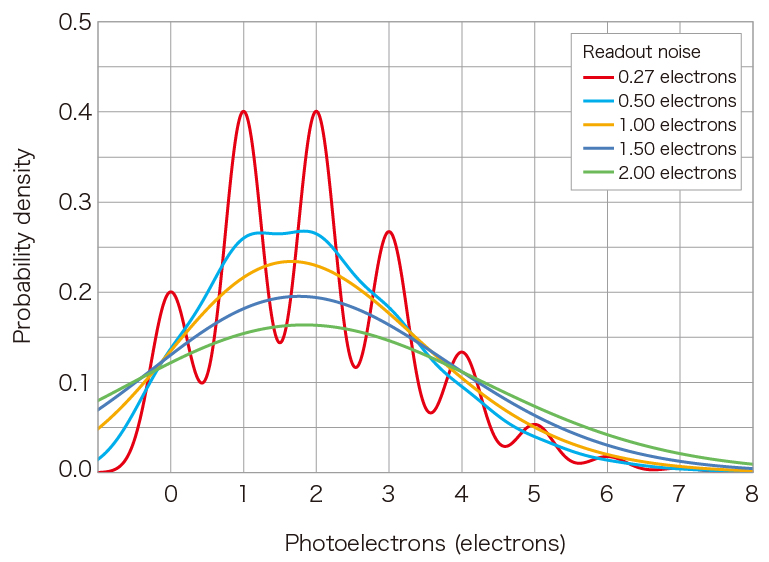
3. Back-illuminated structure and high resolution
High QE is essential for high efficiency of detecting photons and achieved by back-illuminated structure. In conventional back-illuminated sensors, crosstalks occur between pixels due to no pixel separation, and resolutions are usually inferior to those of front-illuminated sensors. The ORCA-Quest qCMOS's sensor has back-illuminated structure for achieving high quantum efficiency, and trench structure in one-by-one pixel for reducing crosstalk.

4. Realization of a large number of pixels and high speed readout
Photon counting (PC) level images have typically been acquired using electron multiplication camera such as EM-CCD camera with about 0.3 megapixels. However, ORCA-Quest can acquire not only PC level images but also photon number resolving images with 9.4 megapixels. In addition, it is not fair to compare readout speeds of cameras with different pixel number by frame rate. In such a case the pixel rate (number of pixels × frame rate), which is the number of pixels read out per second, is used. Until now, the fastest camera capable of SPC readout was the EM-CCD camera with about 27 megapixel/s, but the ORCA-Quest enables photon number resolving imaging at about 47 megapixel/s, nearly twice as fast.
Software support
In today's scientific research, it is essential for obtaining optimal results not only to have an excellent digital camera, but also to make full use of an extensive range of camera features; several readout modes, correction functions, more and more pixels and higher and higher readout speeds.
Camera simulation lab
When using a camera for industrial or research applications, it is necessary to select a camera considering various conditions such as wavelength and light intensity of the object to be captured. We offer the "Camera simulation lab", a tool that allows users to intuitively compare the differences in imaging results due to camera performance while checking the simulated images.
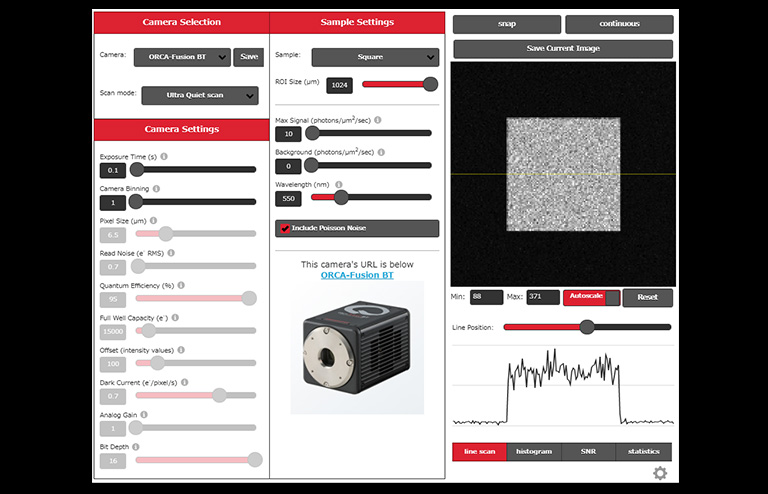
Applications
Quantum technology
Neutral atom, Ion trap
Neutral atoms and ions can be regarded as so-called qubits because they can take on a superposition state in which even a single atom has multiple properties. This property is being actively investigated to realize quantum computing and quantum simulation. By observing the fluorescence of trapped ions and neutral atoms, the state of the qubit can be determined, and a low-noise camera is used to read out the fluorescence.
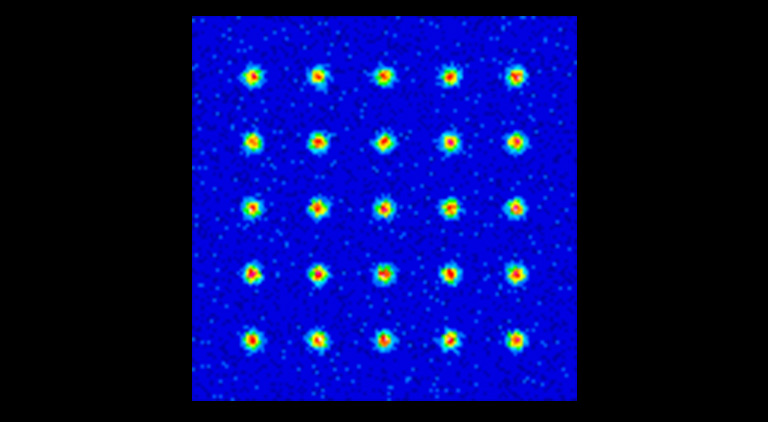
Simulation image (Rb atom@780 nm/Number of atoms: 5 × 5 array/Atomic emission: 2000 photons/Background: 5 photons/Magnification: 20 × (NA: 0.4)/Distance between each atom: 5 μm)
Astronomy
Lucky imaging
When observing stars from the ground, the image of the star can be blurred due to atmospheric turbulence therefore substantially reducing the ability to capture clear images. However, with short exposures and the right atmospheric conditions, you can sometimes capture clear images. For this reason, lucky imaging is a method of acquiring a large number of images and integrating only the clearest ones while aligning them.
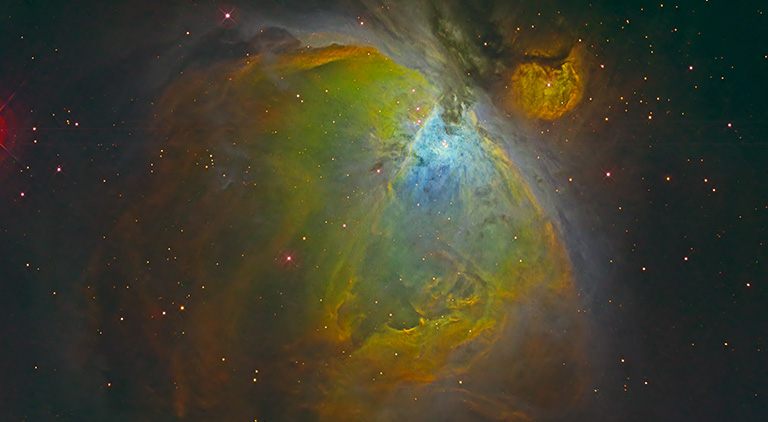
Orion Nebula (Color image with 3 wavelength filters)
Raman spectroscopy
Raman effect is the scattering of light at a wavelength different from that of the incident light, and Raman spectroscopy is a technique for determining the material properties by measuring this wavelength. Raman spectroscopy enables structural analysis at the molecular level, which provides information on chemical bonding, crystallinity, etc.
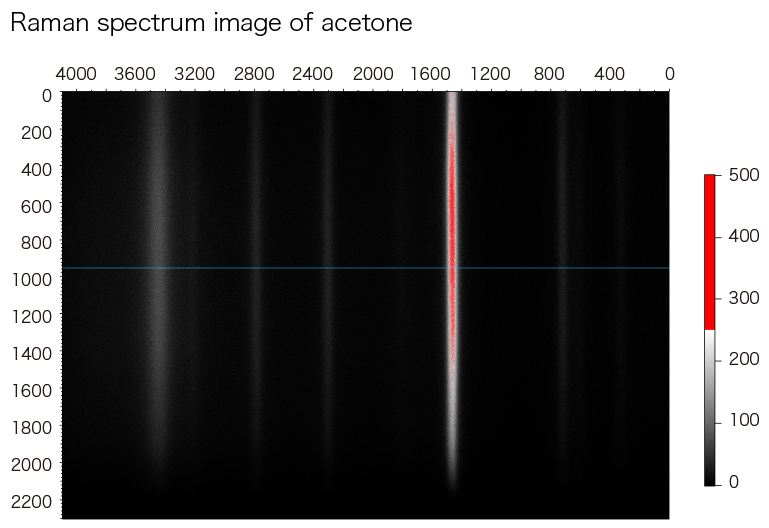
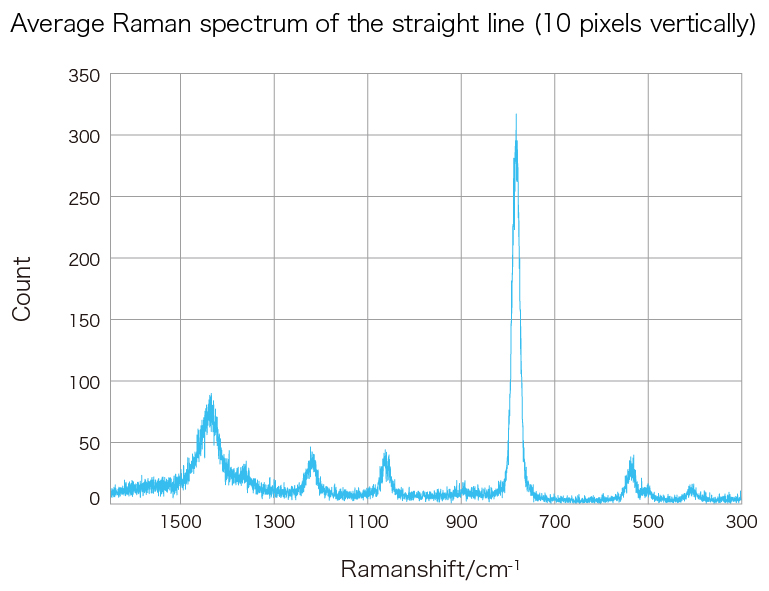
Delayed fluorescence in plants
Plants release a very small portion of the light energy they absorb for photosynthesis as light over a period of time. This phenomenon is known as delayed fluorescence. By detecting this faint light, it is possible to observe the effects of chemicals, pathogens, the environment, and other stressors on plants.
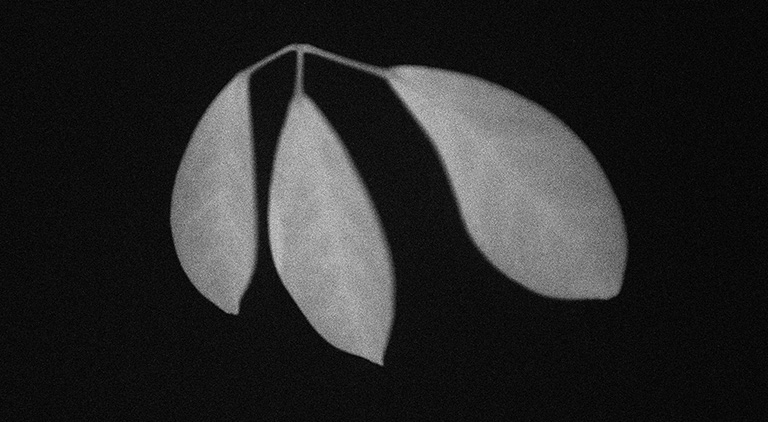
Delayed fluorescence of ornamental plants (exposure for 10 seconds after 10 seconds of excitation light quenching)
PC recommendation
With the introduction of the ORCA-Quest, users are now able to stream 9.4 megapixel images to their computers 120 frames per second. The computer recommendations for this high data rate can be met by using the guidelines listed this PC Recommendations for ORCA-Quest.
Related documents
Technical note
Instruction manual
Camera lineup catalog
Download contents
"Astronomy Camera application case-study" featuring valuable interviews with astronomers and camera lineups
Astronomy is a field where various researches are being conducted to discover and explore unknown celestial bodies and astronomical phenomena. This brochure introduces examples of such applications and our cameras suitable for each application.
3D step file
Detailed 3D model of the ORCA-Quest.
Specifications
| Type number | C15550-20UP |
|---|---|
| Imaging device | qCMOS image sensor |
| Effective no. of pixels | 4096 (H) × 2304 (V) |
| Cell size | 4.6 μm (H) × 4.6 μm (V) |
| Effective area | 18.841 mm (H) × 10.598 mm (V) |
| Full well capacity | 7000 electrons (typ.) |
| Readout speed | Standard scan*1: 120 frames/s (At full resolution, CoaXPress), 17.6 frames/s (At full resolution, USB) Ultra quiet scan: 5 frames/s (At full resolution, CoaXPress, USB) Ultra quiet scan (M17230 option): 25.4 frames/s (At full resolution, CoaXPress), 17.6 frames/s (At full resolution, USB) |
| Readout noise | Standard scan: 0.43 electrons rms (typ.) Ultra quiet scan: 0.27 electrons rms (typ.) Ultra quiet scan (M17230 option): 0.30 electrons rms (typ.) |
| Exposure time | Standard scan*1: 7.2 μs to 1800 s Ultra quiet scan:199.9 ms *2 to 1800 s (internal, edge, level, start) Ultra quiet scan:200.2 ms *2 to 1800 s (sync readout) Ultra quiet scan:172.8 μs to 1800 s (global reset edge, global reset level) Ultra quiet scan (M17230 option): 33.9 μs to 1800 s (33.9 μs steps) |
| Cooling temperature | Forced-air cooled (Ambient temperature: +25 °C) : -20 ℃ Water cooled (Water temperature: +25 °C)*3 : -20 ℃ Water cooled (Max cooling; The water temperature is +20 ℃ and the ambient temperature is +20 ℃) *3: -35 ℃ (typ.) |
| Dark current | Forced-air cooled (Ambient temperature: +25 °C) : 0.016 electrons/pixels/s (typ.) Water cooled (Water temperature: +25 °C) : 0.016 electrons/pixels/s (typ.) Water cooled (Max cooling; The water temperature is +20 ℃ and the ambient temperature is +20 ℃) : 0.006 electrons/pixels/s (typ.) |
| Dynamic range | 26 000:1 (rms) (typ.)*4 |
| External trigger mode | Edge / Global reset edge / Level / Global reset level / Sync readout / Start |
| External trigger signal routing | SMA |
| Trigger delay function | 0 s to 10 s in 1 μs steps |
| Trigger output | Global exposure timing output / Any-row exposure timing output / Trigger ready output / 3 programmable timing outputs / High output / Low output |
| External signal output routing | SMA |
| Image processing functions | Defect pixel correction (ON or OFF, hot pixel correction 3 steps) |
| Interface | USB 3.1 Gen 1, CoaXPress (Quad CXP-6) |
| A/D converter | 16 bit, 12 bit, 8 bit |
| Lens mount | C-mount*5 |
| Power supply | AC100 V to AC240 V, 50 Hz/60 Hz |
| Power consumption | Approx. 155 VA |
| Ambient operating temperature | 0 °C to +40 °C |
| Ambient storage temperature | -10 °C to +50 °C |
| Ambient operating humidity | 30 % to 80 % (With no condensation) |
| Ambient storage humidity | 90 % Max. (With no condensation) |
*2: When global reset edge or global reset level trigger is selected, the exposure time is 172.8 μs to 1800 s. When sync readout trigger is selected, 200.2 ms to 1800 s.
*3: Calculated from the ratio of the full well capacity and the readout noise in ultra quiet scan
Dimensions
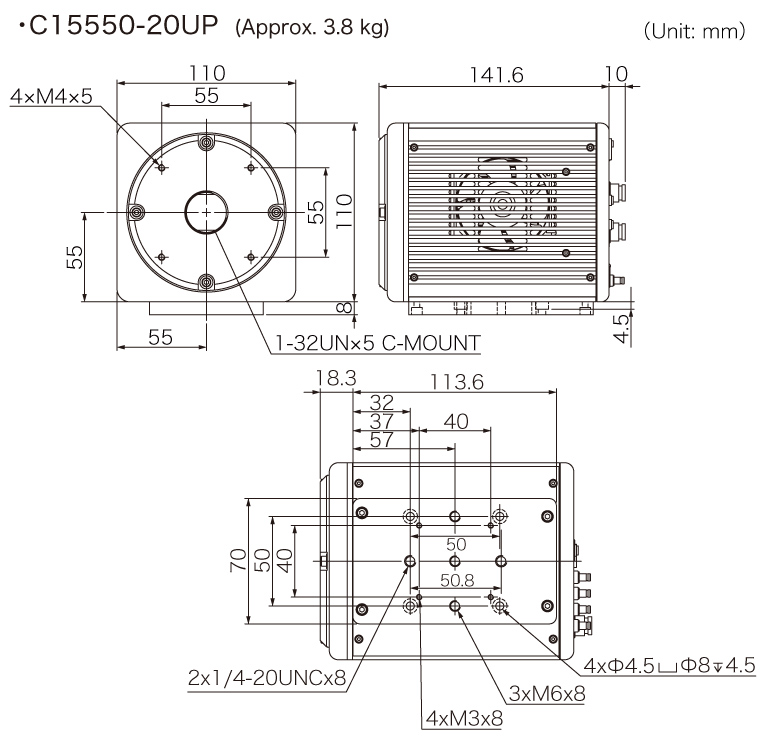
- Confirmation
-
It looks like you're in the . If this is not your location, please select the correct region or country below.
You're headed to Hamamatsu Photonics website for GB (English). If you want to view an other country's site, the optimized information will be provided by selecting options below.
In order to use this website comfortably, we use cookies. For cookie details please see our cookie policy.
- Cookie Policy
-
This website or its third-party tools use cookies, which are necessary to its functioning and required to achieve the purposes illustrated in this cookie policy. By closing the cookie warning banner, scrolling the page, clicking a link or continuing to browse otherwise, you agree to the use of cookies.
Hamamatsu uses cookies in order to enhance your experience on our website and ensure that our website functions.
You can visit this page at any time to learn more about cookies, get the most up to date information on how we use cookies and manage your cookie settings. We will not use cookies for any purpose other than the ones stated, but please note that we reserve the right to update our cookies.
1. What are cookies?
For modern websites to work according to visitor’s expectations, they need to collect certain basic information about visitors. To do this, a site will create small text files which are placed on visitor’s devices (computer or mobile) - these files are known as cookies when you access a website. Cookies are used in order to make websites function and work efficiently. Cookies are uniquely assigned to each visitor and can only be read by a web server in the domain that issued the cookie to the visitor. Cookies cannot be used to run programs or deliver viruses to a visitor’s device.
Cookies do various jobs which make the visitor’s experience of the internet much smoother and more interactive. For instance, cookies are used to remember the visitor’s preferences on sites they visit often, to remember language preference and to help navigate between pages more efficiently. Much, though not all, of the data collected is anonymous, though some of it is designed to detect browsing patterns and approximate geographical location to improve the visitor experience.
Certain type of cookies may require the data subject’s consent before storing them on the computer.
2. What are the different types of cookies?
This website uses two types of cookies:
- First party cookies. For our website, the first party cookies are controlled and maintained by Hamamatsu. No other parties have access to these cookies.
- Third party cookies. These cookies are implemented by organizations outside Hamamatsu. We do not have access to the data in these cookies, but we use these cookies to improve the overall website experience.
3. How do we use cookies?
This website uses cookies for following purposes:
- Certain cookies are necessary for our website to function. These are strictly necessary cookies and are required to enable website access, support navigation or provide relevant content. These cookies direct you to the correct region or country, and support security and ecommerce. Strictly necessary cookies also enforce your privacy preferences. Without these strictly necessary cookies, much of our website will not function.
- Analytics cookies are used to track website usage. This data enables us to improve our website usability, performance and website administration. In our analytics cookies, we do not store any personal identifying information.
- Functionality cookies. These are used to recognize you when you return to our website. This enables us to personalize our content for you, greet you by name and remember your preferences (for example, your choice of language or region).
- These cookies record your visit to our website, the pages you have visited and the links you have followed. We will use this information to make our website and the advertising displayed on it more relevant to your interests. We may also share this information with third parties for this purpose.
Cookies help us help you. Through the use of cookies, we learn what is important to our visitors and we develop and enhance website content and functionality to support your experience. Much of our website can be accessed if cookies are disabled, however certain website functions may not work. And, we believe your current and future visits will be enhanced if cookies are enabled.
4. Which cookies do we use?
There are two ways to manage cookie preferences.
- You can set your cookie preferences on your device or in your browser.
- You can set your cookie preferences at the website level.
If you don’t want to receive cookies, you can modify your browser so that it notifies you when cookies are sent to it or you can refuse cookies altogether. You can also delete cookies that have already been set.
If you wish to restrict or block web browser cookies which are set on your device then you can do this through your browser settings; the Help function within your browser should tell you how. Alternatively, you may wish to visit www.aboutcookies.org, which contains comprehensive information on how to do this on a wide variety of desktop browsers.
5. What are Internet tags and how do we use them with cookies?
Occasionally, we may use internet tags (also known as action tags, single-pixel GIFs, clear GIFs, invisible GIFs and 1-by-1 GIFs) at this site and may deploy these tags/cookies through a third-party advertising partner or a web analytical service partner which may be located and store the respective information (including your IP-address) in a foreign country. These tags/cookies are placed on both online advertisements that bring users to this site and on different pages of this site. We use this technology to measure the visitors' responses to our sites and the effectiveness of our advertising campaigns (including how many times a page is opened and which information is consulted) as well as to evaluate your use of this website. The third-party partner or the web analytical service partner may be able to collect data about visitors to our and other sites because of these internet tags/cookies, may compose reports regarding the website’s activity for us and may provide further services which are related to the use of the website and the internet. They may provide such information to other parties if there is a legal requirement that they do so, or if they hire the other parties to process information on their behalf.
If you would like more information about web tags and cookies associated with on-line advertising or to opt-out of third-party collection of this information, please visit the Network Advertising Initiative website http://www.networkadvertising.org.
6. Analytics and Advertisement Cookies
We use third-party cookies (such as Google Analytics) to track visitors on our website, to get reports about how visitors use the website and to inform, optimize and serve ads based on someone's past visits to our website.
You may opt-out of Google Analytics cookies by the websites provided by Google:
https://tools.google.com/dlpage/gaoptout?hl=en
As provided in this Privacy Policy (Article 5), you can learn more about opt-out cookies by the website provided by Network Advertising Initiative:
http://www.networkadvertising.org
We inform you that in such case you will not be able to wholly use all functions of our website.
Close


